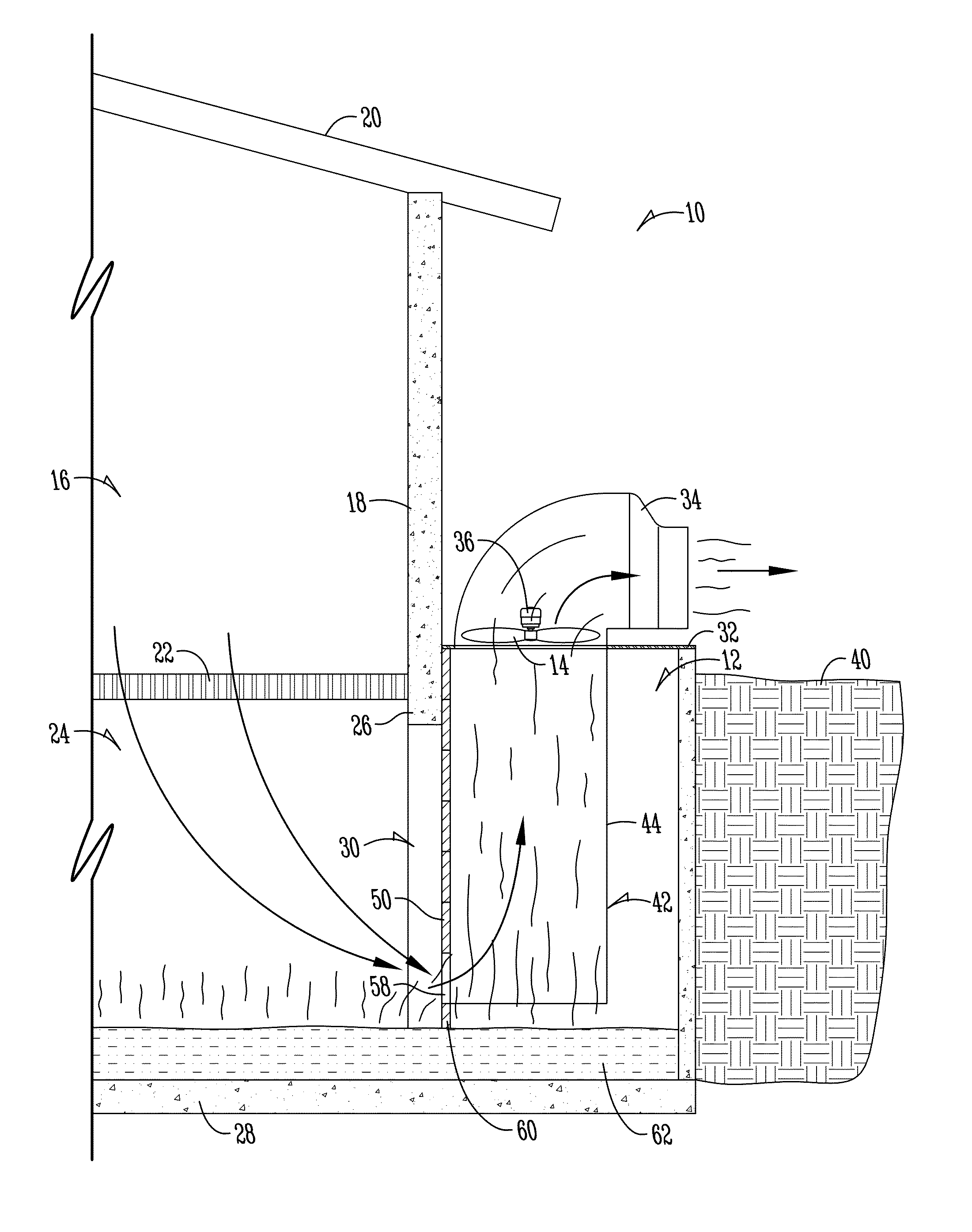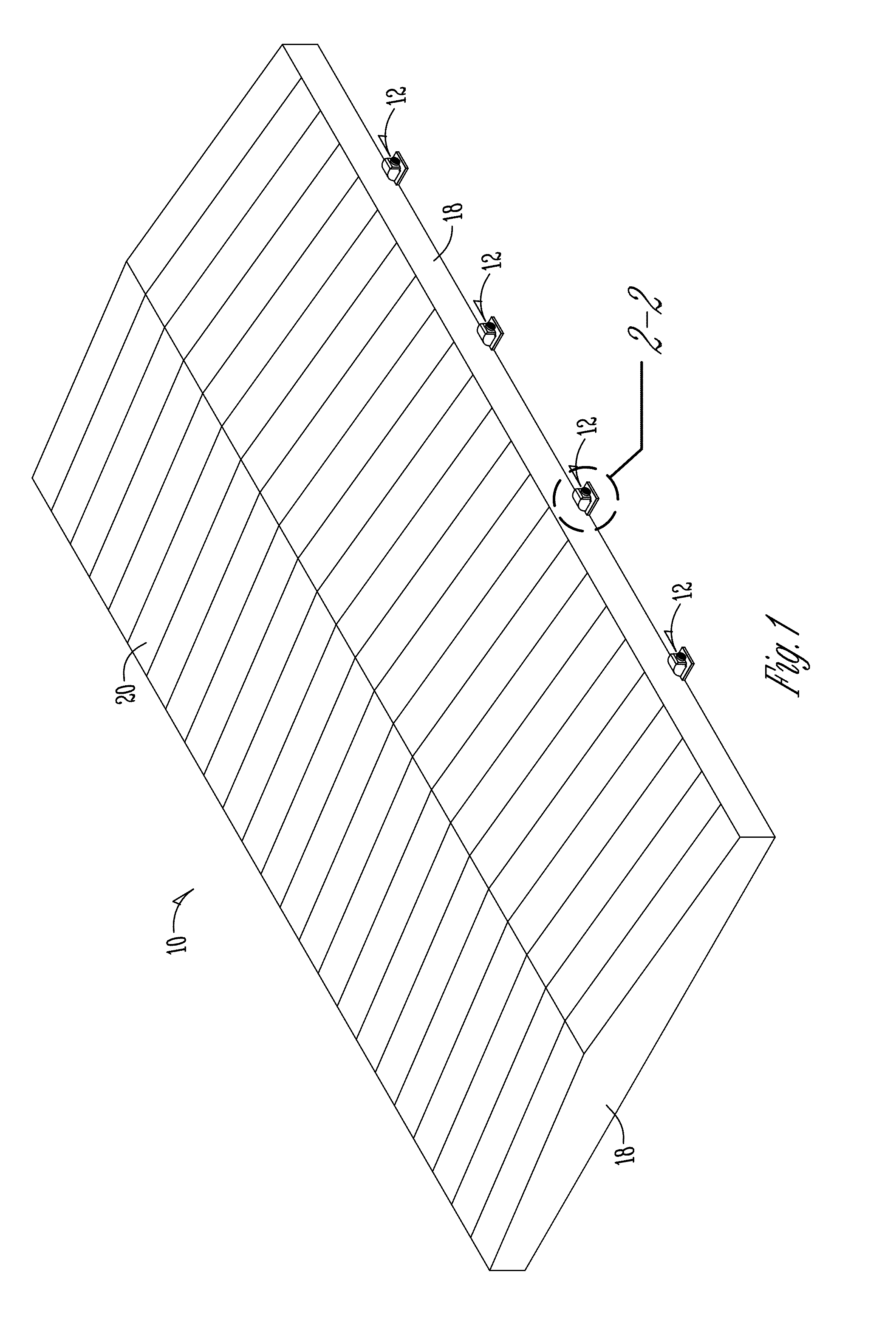Hog confinement building ventilation system
a ventilation system and confinement building technology, applied in ventilation systems, lighting and heating apparatus, heating types, etc., can solve the problems of noxious gases and fumes rising upwards, killing pigs, and high flammability of methane, so as to minimize air turbulence adjacent to the confinement building slatted floor
- Summary
- Abstract
- Description
- Claims
- Application Information
AI Technical Summary
Benefits of technology
Problems solved by technology
Method used
Image
Examples
Embodiment Construction
[0027]FIG. 1 shows the basic structure of a hog confinement building 10 having a series of pump out pits 12 spaced along opposite sides of the building 10. A fan 14 is mounted on the top of each pump out pit 12 as best seen in FIG. 2. As shown in FIGS. 3 and 4, the building 10 includes a hog confinement area 16 defined by perimeter walls 18, a roof 20, and a slatted floor 22. A waste material or manure pit or reservoir 24 is provided beneath the slatted floor 22, as defined by the foundation walls 26 and the reservoir floor 28. Each pump out pit 12 is formed adjacent the foundation walls 26, with an opening 30 being formed in the foundation wall 26 to provide flow of waste material from the manure reservoir 24 into the pump out pit 12. As seen in FIGS. 2-4, a cover 32 is provided on the top of each pit 12. A fan housing 34 is mounted on each cover 32 and encloses the fan 14 and fan motor 36. The housing 34 includes an exhaust opening covered by a grate or screen 38. Thus, as seen in...
PUM
 Login to View More
Login to View More Abstract
Description
Claims
Application Information
 Login to View More
Login to View More - R&D
- Intellectual Property
- Life Sciences
- Materials
- Tech Scout
- Unparalleled Data Quality
- Higher Quality Content
- 60% Fewer Hallucinations
Browse by: Latest US Patents, China's latest patents, Technical Efficacy Thesaurus, Application Domain, Technology Topic, Popular Technical Reports.
© 2025 PatSnap. All rights reserved.Legal|Privacy policy|Modern Slavery Act Transparency Statement|Sitemap|About US| Contact US: help@patsnap.com



